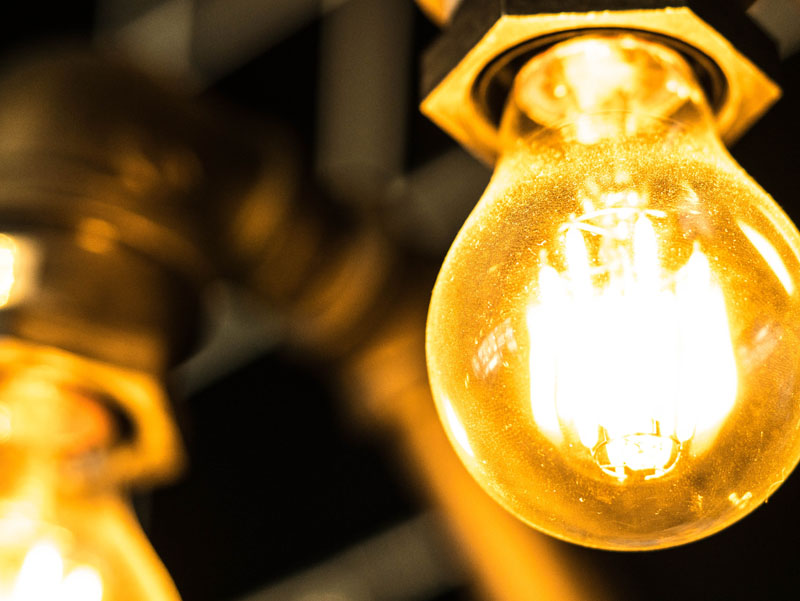Balancing aperture and shutter speed is an important aspect of photography that determines the amount of light that enters the camera and reaches the film or image sensor. Aperture refers to the size of the lens opening, while shutter speed refers to the amount of time that the camera’s shutter is open.
Both aperture and shutter speed play a crucial role in determining the exposure of a photograph, which is the measure of how light or dark an image appears.
One of the main challenges in photography is to achieve the right exposure, as under or over exposed images can ruin the final photograph. Aperture and shutter speed work together to control the amount of light that reaches the film or image sensor, and hence they need to be balanced carefully to get the desired exposure.
In this article, we’ll delve into balancing aperture and shutter speed for exposure and discuss the pros and cons, provide some examples, and answer some frequently asked questions.
Introduction to Aperture and Shutter Speed
Aperture is a measure of the size of the lens opening, which is controlled by a set of blades called the aperture diaphragm.
The size of the aperture can be adjusted to allow more or less light to pass through the lens and reach the film or image sensor. Aperture is measured in f-stops, with larger f-stop numbers indicating a smaller aperture opening and vice versa. For example, f/8 is a smaller aperture opening than f/4.
Shutter speed, on the other hand, refers to the amount of time that the camera’s shutter remains open to allow light to reach the film or image sensor. Shutter speed is measured in seconds or fractions of a second. For example, 1/250th of a second is a faster shutter speed than 1/60th of a second.
How aperture and shutter speed affect exposure
Aperture and shutter speed work together to control the amount of light that reaches the film or image sensor, and hence they have a direct impact on the exposure of a photograph.
Increasing the aperture size (decreasing the f-stop number) allows more light to pass through the lens and reach the film or image sensor, resulting in a brighter image. On the other hand, decreasing the aperture size (increasing the f-stop number) reduces the amount of light that reaches the film or image sensor, resulting in a darker image.
Similarly, increasing the shutter speed (using a faster shutter) reduces the amount of time that the camera’s shutter is open, allowing less light to reach the film or image sensor and resulting in a darker image.
On the other hand, decreasing the shutter speed (using a slower shutter) increases the amount of time that the camera’s shutter is open, allowing more light to reach the film or image sensor and resulting in a brighter image.
Balancing aperture and shutter speed
To achieve the desired exposure, it is important to balance the aperture and shutter speed appropriately. If the aperture is increased (the f-stop number is decreased), the shutter speed needs to be decreased (slowed down) to compensate for the increase in light and maintain the same level of exposure.
Similarly, if the aperture is decreased (the f-stop number is increased), the shutter speed needs to be increased (speeded up) to compensate for the decrease in light and maintain the same level of exposure.
It is important to note that aperture and shutter speed are not the only factors that affect exposure
Pros and cons of using different aperture and shutter speed combinations:
Here are some pros and cons of using different aperture and shutter speed combinations
Creative Vision
The choice of aperture and shutter speed combination depends on the specific requirements of the photograph and the creative vision of the photographer.
Different combinations of aperture and shutter speed have their own pros and cons, and it is important to understand these trade-offs to make an informed decision.
Exposure
One of the main considerations in choosing the right aperture and shutter speed combination is the amount of light available.
In low light conditions, a wider aperture (smaller f-stop number) and slower shutter speed may be necessary to allow sufficient light to reach the film or image sensor and achieve the desired exposure.
On the other hand, in bright light conditions, a smaller aperture (larger f-stop number) and faster shutter speed may be needed to prevent overexposure.
Depth of Field
Another important consideration is the effect of aperture and shutter speed on the depth of field and motion blur in the photograph. Aperture controls the depth of field, which is the range of sharpness in the photograph.
A wider aperture (smaller f-stop number) results in a shallow depth of field, where only a small portion of the image is in focus, while a smaller aperture (larger f-stop number) results in a deeper depth of field, where a larger portion of the image is in focus.
Motion Blur
Shutter speed, on the other hand, controls the amount of motion blur in the photograph. A faster shutter speed freezes motion, while a slower shutter speed captures motion blur.
It is important to balance these factors to get the desired effect in the photograph.
For example, if the goal is to capture a landscape photograph with a deep depth of field and no motion blur, a small aperture (larger f-stop number) and fast shutter speed may be appropriate.
On the other hand, if the goal is to capture a portrait with a shallow depth of field and a blurred background, a wider aperture (smaller f-stop number) and slower shutter speed may be more suitable.
Aperture and Shutter Speed for Exposure Examples
Here are some examples of balancing aperture and shutter speed for different scenarios:
Landscape photography
To capture a landscape photograph with a deep depth of field and no motion blur, a small aperture (large f-stop number) and fast shutter speed may be used. For example, f/8 and 1/1000th of a second may be a suitable combination.
Portrait photography
To capture a portrait with a shallow depth of field and a blurred background, a wider aperture (small f-stop number) and slower shutter speed may be used. For example, f/2.8 and 1/60th of a second may be a suitable combination.
Sports photography
To capture fast-moving action with minimal motion blur, a fast shutter speed is necessary. Aperture may be adjusted based on the amount of light available and the desired depth of field. For example, f/5.6 and 1/1000th of a second may be a suitable combination.
Low light photography
In low light conditions, a wider aperture (small f-stop number) and slower shutter speed may be necessary to allow sufficient light to reach the film or image sensor. For example, f/2.8 and 1/30th of a second may be a suitable combination.
Aperture and Shutter Speed for Exposure FAQ
Frequently asked questions about balancing aperture and shutter speed for exposure:
Here are some commonly asked questions about balancing aperture and shutter speed for exposure:
What is the “correct” exposure?
The “correct” exposure is a matter of personal preference and depends on the specific requirements of the photograph. In general, a balanced exposure is one where the image is neither too light nor too dark, and all the important details in the photograph are visible. A well-exposed photograph is one that has good contrast, with the shadows and highlights in the right places.
How do I know if my photograph is properly exposed?
One way to check the exposure of a photograph is to use the camera’s histogram, which is a graphical representation of the tonal range of the image. The histogram gives an idea of the distribution of light and dark tones in the photograph, and can help identify if the image is under or overexposed.
Another way to check the exposure is to use the camera’s exposure compensation feature, which allows the photographer to adjust the exposure up or down to see how it affects the final image.
Is it better to use a wider aperture or a smaller aperture?
The choice of aperture depends on the specific requirements of the photograph and the creative vision of the photographer. A wider aperture (smaller f-stop number) allows more light to pass through the lens and results in a shallow depth of field, where only a small portion of the image is in focus. This can be useful for isolating the subject from the background and creating a bokeh effect.
On the other hand, a smaller aperture (larger f-stop number) allows less light to pass through the lens and results in a deeper depth of field, where a larger portion of the image is in focus. This can be useful for landscape photography or other scenarios where a deep depth of field is desired.
Is it better to use a faster shutter speed or a slower shutter speed?
The choice of shutter speed depends on the specific requirements of the photograph and the creative vision of the photographer. A faster shutter speed freezes motion and is useful for capturing fast-moving action or avoiding motion blur.
On the other hand, a slower shutter speed captures motion blur and can be useful for creative effects or conveying a sense of movement in the photograph.
Aperture and Shutter Speed for Exposure Conclusion
In conclusion, balancing aperture and shutter speed is an important aspect of photography that determines the exposure of a photograph.
Aperture controls the size of the lens opening and the depth of field, while shutter speed controls the amount of time that the camera’s shutter is open and the amount of motion blur in the photograph.
By understanding how aperture and shutter speed work together and the trade-offs involved, photographers can make informed decisions and achieve the desired exposure and creative effects in their photographs.


